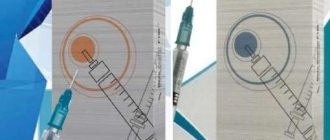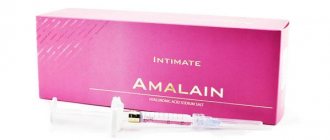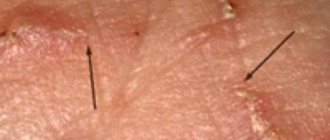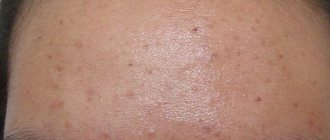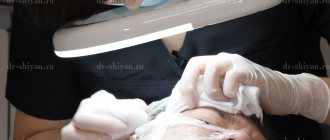The World Health Organization noted that more than 40% of people on our planet suffer from allergies, so today this disease is rightly called a pandemic of the 21st century. Every year there is an increase in incidence, and it is noted that among residents of economically developed countries the incidence rate is higher. A person encounters substances that cause an allergic reaction - allergens - not only on the street and at home, but even in food. When going outside, a person may have an allergic reaction to the pollen of flowering plants, but at home, pet hair or house dust becomes dangerous for him. Food allergies are considered the most insidious, as they greatly affect the quality of life. Food allergens can cause cross-reactions and if a person, for example, is allergic to birch pollen, then most likely he may experience a special reaction to eating certain raw vegetables or fruits.
Food allergies are considered the most insidious, as they greatly affect the quality of life.
Allergy symptoms
The manifestation of mild forms of allergies occurs quite unnoticed and often does not cause discomfort. However, symptoms may intensify depending on the type of allergen and the place of its contact with a part of the body, so you should pay attention to the appearance of any unusual reactions for the body:
- sneezing (severe and frequent);
- cough or difficulty breathing;
- feeling of lack of air;
- itching in the nose and discharge of liquid secretion;
- lacrimation;
- skin itching or redness;
- etc.
Antihistamines and the stomach
Histamine itself activates the production of gastric juice. Therefore, there is an opinion that blocking it inhibits secretion. This is not entirely true. H1 blockers are used to relieve symptoms of an allergic reaction. H2 blockers can reduce the production of gastric juice:
- Cimetidine;
- Ranitidine;
- Famotidine;
- Roxatidine.
This is another group of antihistamines used to treat gastritis, gastric ulcers, and reflux esophagitis. Allergy sufferers do not use them. Therefore, there is no risk of disrupting digestion in an attempt to combat hives or conjunctivitis.
What allergy medications are there?
Medicines used to prevent and relieve allergy symptoms are called antihistamines. Their mechanism of action is to block the production of histamine, a chemical that is normally present in the human body, is involved in immune processes and regulates various physiological functions. When an allergen enters the body, a large amount of histamine is released. This leads to an inflammatory response that manifests itself as allergy symptoms. In order not to harm yourself and restore the normal state of the body as quickly as possible, it is important to know which allergy medicine can be used and what the features and differences are between the presented drugs. There are three generations of antihistamines.
What can trigger an increase in histamine?
Allergens are substances that provoke increased release of histamine. Medicine has studied many allergens that can be divided into such groups.
Exogenous infectiousExogenous non-infectiousEndogenousVirusesFoodProtein-containing compounds that make up the cells of the bodyBacteriaPolenFungiIndustrialHouseholdMedicinal
Endogenous allergens are produced by the body itself. They cause autoimmune diseases (attacks of the immune system on healthy tissues).
Exogenous ones enter the body from the environment - through food, plant pollen, house dust. Industrial allergens include a variety of chemicals (dyes, cleaning products, fragrances).
First generation drugs
1st generation antihistamines are able to penetrate the nervous system. This helps to quickly eliminate allergy symptoms. However, their effect does not last long, and with long-term use of drugs of this group, addiction may occur. The most common side effects of 1st generation antihistamines are drowsiness, weakness, headache, dizziness and slow reactions. Despite significant disadvantages, these drugs are low in cost and, unlike modern drugs, are available in both tablet and injection form, which allows them to be used for emergency care. Not intended for long-term treatment. In this group there are 4 most effective drugs: diphenhydramine, diazolin, suprastin and tavegil.
- Diphenhydramine. One of the very first antihistamines. Dispensed strictly according to prescription. Used in emergency situations. Not suitable for children.
- Diazolin. Does not cause significant drowsiness. Can be used for prevention purposes. Suitable for use by both children and adults. Longer lasting effect. Ineffective for severe allergic reactions.
- Suprastin. Does not cause significant drowsiness. A rapid therapeutic effect and, compared to other drugs in this group, there are fewer side effects. Has a wider range of indications. Can be used by both adults and children. Not recommended for use in bronchial asthma.
- Tavegil. Used as a treatment for both allergic and pseudoallergic reactions. Does not cause significant drowsiness. Effectively relieves allergy symptoms, especially during the flowering period. Effective for 8 hours (the longest effect from the group of first-generation drugs).
Features of the action of antihistamines
First generation antihistamines are not limited to suppressing the activity of the central nervous system. They block receptors for various neurotransmitters, not just histamine, and therefore have a number of side effects:
- increased heart rate;
- nausea and vomiting;
- increased eye pressure;
- stomach pain;
- urinary disturbance;
- dry mucous membranes.
With prolonged use, the patient may lose weight, become overexcited, and lose consciousness. In case of overdose, convulsions are possible.
Second-generation antihypertensives act more selectively, and therefore their use does not cause undesirable reactions from organs other than the heart. Patients should consider the risk of sinus and reflex tachycardia, as well as arrhythmias.
Second generation drugs
2nd generation antihistamines have a wider spectrum of action, practically do not cause drowsiness, and if the dosage is observed, the development of side effects is minimized. The effect of the drug lasts up to 24 hours. Not addictive. However, due to the nature of their action, they can disrupt the heart rhythm. There is a risk of developing individual intolerance. This group includes effective drugs: fenistil, claritin and histalong.
- Fenistil. Available in the form of a gel, emulsion and drops, which makes the drug universal for administration. Gel and emulsions can be applied to the skin to eliminate an allergic reaction, local cooling and anesthesia, which is especially effective for insect bites or skin itching that occurs after contact with an allergen.
- Claritin. It is considered the safest of the second generation drugs and is therefore widely used. Does not cause drowsiness or decreased concentration. Can be used by both adults and children (from 3 years old). Can be used for long-term use. Should be taken with caution in the presence of liver dysfunction.
- Gistalong. It has the longest therapeutic effect of the second generation drugs. Can be used to treat chronic allergic processes. Despite the positive qualities of the drug, it cannot be used for heart rhythm disturbances. Not recommended for children and elderly people.
Bibliography
- [1] Sergeev Yu.V. Allergy to materials used in orthopedic dentistry [Text] / Yu.V. Sergeev, T.P. Guseva // Attending physician. – 2004 – No. 3. – 38-41 s.
- [2] Allergology. Clinical recommendations developed by the RAACI Working Group / ed. R. M. Khaitova. – M.: Farmarus Print Media, 2013. – p. 126 p.
- [3] Agafonova V.A. Study of antihistamines of 3 generations: materials of the V student international correspondence scientific and practical conference “Scientific community of students of the 21st century. Natural Sciences” / V.A. Agafonova, Yudicheva K.V. – M.: publishing house Siberian Association of Consultants, 2012. – 322 p.
- [4] Korsunskaya I.M. Skin itching: what you should think about / I.M. Korsunskaya, E.V. Dvoryankova, K.T. Plieva [etc.] // Effective pharmacotherapy. – 2015. – No. 45. – 14-18 s.
- [5] Instructions for use of the medicinal product for medical use Cetrin®. – Registration number: P N013283/01.
Third generation drugs
If you have an allergy, you should always have antihistamines in your home medicine cabinet.
Officially, third-generation drugs have not yet been developed, however, unofficially, improved second-generation drugs are included in this group. This group is characterized by a rapid onset of action and high efficiency. The drugs have fewer side effects. Individual intolerance is possible. They can be used both to relieve allergy symptoms and for long-term treatment of the disease. They do not affect heart rate. The best third-generation drugs include Cetrin, Erius, Xizal, and Fexofen.
- Cetrin. Available in the form of tablets (contraindicated in children under 6 years of age) and in the form of syrup (contraindicated in children under 2 years of age). The effect lasts up to 24 hours. Effective in the development of edema. Syrup as part of complex therapy relieves spasms in bronchial asthma. It has virtually no contraindications. Should be used with caution in elderly people.
- Erius. Available in the form of tablets (contraindicated in children under 12 years of age) and syrup (contraindicated in children under 1 year of age). It works almost immediately. Duration of action is up to 24 hours. Relieves and prevents the development of allergy symptoms. Should be taken with caution in case of renal failure
- Xizal (Zodak). Available in the form of tablets and drops. Has an anti-inflammatory effect. Quickly eliminates itching, swelling and redness. The effect of the drug is observed for up to 2 days. Contraindicated in renal failure. Not suitable for use by children under 6 years of age.
- Fexofen (Allegra, Fexofast). Effectively eliminates allergy symptoms, especially with seasonal rhinitis. The effect lasts for 12 hours. Can be used as prophylaxis. Not suitable for use by children under 12 years of age.
Histamine and histamine receptors
Histamine is one of the most important mediators, belonging to biogenic amines and synthesized from the amino acid histidine by decarboxylation. In the human body, histamine performs a number of physiological functions and is involved in many pathobiological processes. The main depot of histamine in the body is mast cells and basophils, where it is found in the form of granules in a bound state. The largest number of mast cells are located in the skin, mucous membranes of the bronchi and intestines. Histamine realizes its activity through interaction with specific histamine receptors (HRs) located on the cells of various tissues. They belong to a large family of G protein-coupled receptors (GPCRs). A group of GPCRs are actively involved in the transmission of extracellular signals across the cell membrane by specifically recognizing and binding a variety of ligands, such as proteins, ions, neurotransmitters, and even light stimuli (photons). GPCRs are widely present in the body and are involved in many processes, both physiological and pathological, such as smell, taste, vision, cognitive functions, emotions, immune response, etc. allergies, as well as in the regulation of the activity of the cardiovascular, nervous, digestive, respiratory and other systems of the body [1]. To date, four types of GH have been described (Table 1), among which the most studied are the H1 and H2 receptors, which are distributed in both the peripheral and central nervous systems (CNS) and allow histamine to act on smooth muscles and secretory activity of the glands of the mucous membranes.
Acting on the H1 receptor, histamine causes itching, stimulates secretion of the nasal mucosa, contracts smooth muscles in the bronchi and intestines, and relaxes smooth muscles in small blood vessels. In addition, histamine stimulates the secretion of gastric acid through H2 receptors. H3 receptors are primarily expressed in the CNS and act as autoreceptors on histaminergic neurons, inhibiting histamine release and modulating other neurotransmitters. H4 receptors are found in cells of the immune system, the gastrointestinal tract, the central nervous system and primary afferent neurons. The action of histamine on H4 receptors causes chemotaxis of mast cells, secretion of cytokines and activation of adhesion molecules [7].
Predominantly H1 receptors are involved in the development of allergies, but data have now been accumulated on the role of H4 receptors in immunopathological conditions [7–10]. The possibility of using drugs that act on H4 receptors for various diseases is being discussed, incl. for allergies [11]. H2 receptors may also be involved in the development of allergic manifestations [12, 13].
The following fact is important: all GPCRs have constitutive (spontaneous) receptor activity, i.e. their activity is manifested even in the absence of the agonist and its connection with the receptor [14]. This is clearly explained by the model of the equilibrium state of the receptor: the simultaneous existence of its spontaneously active and inactive forms. Under the influence of various agents, an imbalance can occur and a shift towards activation (in the case of GH - under the influence of histamine) or, conversely, towards the inactive state of the receptor (under the influence of blockers, or rather inverse agonists of H1 receptors). In addition, there are neutral agonists that bind to both active and inactive forms of receptors, maintaining their equilibrium state. Based on the above, H1-antihistamines, in fact, are not blockers, but inverse agonists of receptors, although the usual terminology has traditionally been preserved to this day [15].
The effect of histamine on H1 receptors is represented by a wide variety of clinical manifestations:
- in the skin - swelling, hyperemia, itching, rashes;
- in the upper respiratory tract – itching, sneezing, swelling of the nasal mucosa and paranasal sinuses, increased mucus secretion;
- in the lower respiratory tract - swelling of the bronchial wall, hypersecretion and bronchospasm;
- in the mucous membrane of the eyes - itching, hyperemia, swelling and lacrimation;
- in the gastrointestinal tract - abdominal pain, vomiting, diarrhea, increased production of mucus, pepsin and hydrochloric acid;
- in the cardiovascular system - systemic arterial hypotension and cardiac arrhythmia.
Histamine plays one of the key roles in the development of allergic diseases such as atopic dermatitis, allergic rhinitis, bronchial asthma, allergic conjunctivitis, urticaria, as well as systemic anaphylactic reactions [16].
Activation of H1 receptors is accompanied by the production of phospholipase C, D and A2, which ultimately leads to the release of calcium ions (Ca2+), respectively, to the activation of cell function. In addition, the activity of nuclear factor kB (NF-kB) increases, which is associated with the production of pro-inflammatory cytokines and intercellular adhesion molecules, such as P-selectin, ICAM-1, VCAM-1, iNOS, TNF-α, GM-CSF, IL -1β, IL-6. It has been established that NF-kB plays an important role in the activation of lymphocytes, in particular, it promotes the differentiation of type 2 T helper cells (Th2 lymphocytes), which is especially important in allergic diseases. Increased levels of NF-kB are found in patients with various types of allergies, incl. with bronchial asthma [17]. Thus, H1 receptors are not only involved in the early phase of the allergic reaction, but also have broader immunological properties, incl. play an important role in the development of the late phase of allergic inflammation. Consequently, the antiallergic effect of antihistamines (AGDs) is multifaceted and includes, incl. anti-inflammatory effect [12].
Classification of antihistamines
According to the classification adopted by the European Academy of Allergists and Clinical Immunologists, all antihypertensive drugs are divided into two generations depending on their effect on the central nervous system.
First generation AGP
First-generation H1 receptor inverse agonists cross the blood-brain barrier and can both stimulate and depress the central nervous system. This typically manifests as CNS depression in most patients. A sedative effect when taking first-generation antihypertensive drugs is subjectively noted by 40–80% of patients. Its absence in individual patients does not exclude an objective negative effect of these drugs on cognitive functions, which patients may not complain about (ability to drive, learn, etc.). Dysfunction of the central nervous system is observed even when using minimal doses of these drugs. The effect of first-generation antihypertensive drugs on the central nervous system is the same as when using alcohol and sedatives [18–20]. Stimulation occurs in some patients receiving conventional doses of antihypertensives, manifesting as restlessness, nervousness, and insomnia. Typically, central excitation is characteristic of an overdose of first-generation antihypertensive drugs; it can lead to convulsions, especially in children.
In addition to the sedative effect and effect on cognitive functions, first-generation antihypertensive drugs are characterized by the following properties:
- short-term effect (forced use 3-4 times a day);
- rapid development of tachyphylaxis (it is necessary to change the drug every 7–10 days);
- low selectivity of action: in addition to H1 receptors, they block acetylcholine, adrenaline, serotonin, dopamine receptors and ion channels, causing many side effects: tachycardia, dry mucous membranes, increased sputum viscosity.
First-generation antihypertensives can increase intraocular pressure, interfere with urination, cause stomach pain, constipation, nausea, vomiting, and increase body weight [21]. That is why these drugs have a number of serious restrictions for use among patients with glaucoma, cardiovascular pathology, diseases of the genitourinary system, etc.
In acute poisoning with first-generation H1-AGPs, their central effects are the most dangerous: the syndrome includes hallucinations, agitation, ataxia, incoordination, convulsions, etc. Fixed dilated pupils on a flushed face along with sinus tachycardia, urinary retention, dry mouth and fever very similar to signs of atropine poisoning. In children with an overdose of first-generation antihypertensive drugs, agitation and convulsions may occur. Therefore, experts in many countries are calling for the abandonment of this group of drugs for children or their use under strict supervision. In addition, sedation may impair children's learning and performance at school [22].
Second generation AGP
New antihypertensive drugs (second generation), unlike old drugs, first generation antihypertensive drugs, are distinguished by a selective effect on H1 receptors, almost do not penetrate the blood-brain barrier, which reduces the likelihood of developing a sedative effect when using them, so they can be recommended to drivers, people, work which requires concentration, for schoolchildren and students. The second generation of antihypertensive drugs is characterized by a higher affinity for H1 receptors, accordingly, the rapid development of the clinical effect and a longer action (over 24 hours) compared to the first generation drugs, which allows the use of most of them no more than once a day. Second-generation antihypertensive drugs are characterized by a low likelihood of developing tolerance to the drug (no tachyphylaxis), and they have a more favorable safety profile.
Second-generation H1-AGPs (H1 receptor inverse agonists) are currently considered the drug of choice for allergic rhinitis, urticaria, and other pruritic dermatoses [16, 23–25].
Side effects of AGP
Side effects of antihypertensive drugs include anticholinergic effects (dry mouth, sinus tachycardia, constipation, urinary retention, blurred vision), adrenolytic effects (hypotension, reflex tachycardia, anxiety), antiserotonin (increased appetite), central antihistamine effects (sedation, increased appetite), blockade potassium channels in the heart (ventricular arrhythmia, prolongation of the GT interval) [26]. The selectivity of the action of drugs on target receptors and the ability to penetrate the blood-brain barrier determine their effectiveness and safety [27].
Among second-generation antihypertensive drugs, cetirizine and levocetirizine have the lowest affinity for M-cholinergic receptors, and therefore an almost complete absence of anticholinergic action (Table 3) [28].
Some antihypertensive drugs can cause the development of arrhythmias up to life-threatening forms. Terfenadine and astemizole are “potentially cardiotoxic.” Due to the ability to cause a potentially fatal arrhythmia - flutter-fibrillation (metabolic impairment due to liver disease or against the background of CYP3A4 inhibitors), terfenadine and astemizole are prohibited for use in many countries, including. and in Russia, from 1998 and 1999. respectively. There are cautions regarding the cardiotoxicity of webastine and rupatadine with regard to currently existing antihypertensive drugs. They are not recommended for use in persons with a prolonged QT interval or hypokalemia. Cardiotoxicity increases when taken simultaneously with drugs that prolong the QT interval: macrolides, antifungals, calcium channel blockers, antidepressants, fluoroquinolones.
Many antihypertensive drugs are metabolized in the liver with the participation of cytochrome P450, and therefore their simultaneous use with inhibitors of this enzyme is not recommended: a number of antifungal drugs (itraconazole, ketoconazole), many macrolides, some antidepressants, cimetidine, etc. [12]. Cetirizine and levocetirizine are not subject to hepatic metabolism [29], fexofenadine is minimally metabolized [30].
According to US toxicological services, first-generation antihypertensive drugs cause 8.3% of deaths from overdose poisoning among adults. In addition, a number of studies indicate that not only diphenhydramine, but also other first-generation AGPs (dextromethorphan, doxylamine, chlorpheniramine, etc.), common in the United States, were found in children, mainly under 12 years of age, who died from various causes, possibly related to overdose of first-generation antihypertensive drugs [31, 32].
Use of antihypertensive drugs in children
The main indication for prescribing antihypertensive drugs to children is the elimination of allergic symptoms associated with the release of histamine, such as itching, sneezing, rhinorrhea and nasal congestion. Second-generation H1 receptor inverse agonists with no or little sedative effect are preferred [33]. It has been shown that the use of second-generation antihypertensive drugs by children with allergic rhinitis does not lead to a decrease in their school performance [34].
The main route of administration is oral, while the parenteral route, possible only for some first-generation antihypertensive drugs (clemastine, chloropyramine), is used to relieve acute allergic reactions (urticaria, angioedema) or for premedication before diagnostic and surgical interventions [16]. External use of topical forms for intranasal, intraconjunctival and cutaneous use of the first generation AGP (Table 4) is intended to eliminate allergy symptoms in eye diseases, rhinitis, and skin itching [33].
Of no small importance in pediatric practice are the availability of special children's dosage forms and the age-permitted range of drug use. Currently in Russia, not a single second-generation antihypertensive is approved for use by children under 6 months. In this age category, the doctor can only prescribe dimethindene and chloropyramine (from the 1st month), while only dimethindene has a pediatric oral dosage form (drops). Of the other drugs used at older ages and having pediatric dosage forms, currently only cetirizine is approved for use by children from 6 months (oral drops, use by children from 6 to 12 months is possible only as prescribed by a doctor under strict medical supervision).
In table 5 discusses the indications for the use of antihypertensive drugs.
Cetirizine
Cetirizine occupies a special place among second-generation AGPs. Along with all the advantages of non-sedating antihypertensive drugs, cetirizine demonstrates properties that distinguish it from a number of new generation drugs, ensuring its high clinical efficacy and safety [46, 47]. In particular, it is characterized by additional antiallergic activity, a rapid onset of effect, and there is no risk of interaction with other medicinal substances and food, which opens up the possibility of safe administration of the drug to patients with concomitant diseases.
The effect of cetirizine consists of its influence on both phases of allergic inflammation. The antiallergic effect includes the so-called. extra-H1 receptor action: inhibition of the release of leukotrienes, prostaglandins in the nasal mucosa, skin, bronchi, stabilization of mast cell membranes, inhibition of eosinophil migration and platelet aggregation, suppression of ICAM-1 expression by epithelial cells [48, 49].
Many authors, both foreign and domestic, consider cetirizine to be the standard of modern AGP. It is one of the most studied antihypertensive drugs, having proven its effectiveness and safety in many clinical studies. For patients who respond poorly to other antihypertensive drugs, cetirizine is recommended [50]. It fully complies with the requirements for modern AGP.
Cetirizine is characterized by a half-life of 7–11 hours, the duration of the effect is 24 hours, after a course of treatment the effect lasts up to 3 days, with long-term use (up to 110 weeks) the development of tolerance is not observed. The duration of the effect of cetirizine (24 hours) is explained by the fact that the effect of AGP is determined not only by the concentration in plasma, but also by the degree of binding to plasma proteins and receptors. Binding to receptors for 24 hours for cetirizine is about 60%, which exceeds this parameter for other AGPs.
Cetirizine is practically not metabolized in the liver and is excreted primarily by the kidneys, so it can be used even by patients with impaired liver function; for patients with renal failure, a dose adjustment of the drug is required.
One of the most important aspects of the drug’s action is the speed of onset of the effect (Table 6). Among second-generation AGPs, the shortest TCmax (time to reach maximum concentration) was observed for cetirizine and levocetirizine. It should be noted that the antihistamine effect begins to develop much earlier and is minimal in antihistamines that do not require preliminary activation in the liver, for example, in cetirizine - after 20 minutes. The maximum concentration of cetirizine is achieved after 1±0.5 hours from administration, in contrast, for example, to loratadine/desloratadine, for which Tmax≈3 hours. Food reduces the overall rate, but does not affect the complete absorption of cetirizine. The long half-life (T½=10 hours) allows the drug to be used once a day. In childhood, the half-life is shortened: from 6 months to 2 years – 3.1 hours; from 2 to 6 years – 5 hours; from 6 to 12 years – 6 hours, which requires changing the dosage regimen in children in accordance with age-related pharmacodynamics: it is advisable to divide the daily dose into 2 doses in order to maintain an optimal high concentration of the drug in the body [51].
On the pharmaceutical market of the Russian Federation, cetirizine preparations, in addition to the original (Zirtec), are currently registered with more than a dozen generic drugs from different manufacturers (RLS, 2020). However, not all generic cetirizines have therapeutic efficacy and safety comparable to the original molecule, proven in clinical studies. A comparative study of cetirizine drops showed that Zodak is comparable in therapeutic efficacy, tolerability and safety to the original drug Zyrtec in relieving the symptoms of seasonal allergic rhinitis in children [52].
Conclusion
H1-AGPs are often used in pediatric practice for the treatment of allergic diseases in accordance with the principles of evidence-based medicine, while their off-label use gives conflicting results (Table 5). The effectiveness of second-generation antihypertensive drugs has been well studied, and they are preferable for use in pediatric practice when side effects need to be minimized. Pharmacological characteristics of cetirizine - rapid onset and duration of action, high specificity for H1 receptors, impact not only on the early but also on the late phase of an immediate allergic reaction, effectiveness, safety and the possibility of long-term use, confirmed in numerous clinical studies, as well as the presence convenient droplet form, approved for use in infants from 6 months, make it a suitable drug for the treatment and prevention of various allergic diseases in children.
Why does histamine increase?
When an irritating component enters the body, antibodies are produced, for the formation of which the immunoglobulin E protein is responsible. The combination of “allergen + antibody” is the main cause of a specific immune reaction, which is called an allergy. The amount of free histamine in the body increases, a neurotransmitter that is involved in the regulation of vital functions and physiological processes, such as blood circulation, digestion, and respiration.
Histamine is an organic compound that is usually bound in the body. In certain diseases and pathological conditions, histamine is released and becomes active. This happens not only with allergic reactions, but also with burns and frostbite.
An increase in free histamine is accompanied by spasm of smooth muscles, tissue swelling, itching of the skin, dilation of capillaries and a decrease in blood pressure, increased heart rate, increased secretion of gastric juice, intestinal colic and a number of other dangerous and unpleasant symptoms. Antiallergic drugs block histamine receptors and thereby help normalize well-being.
